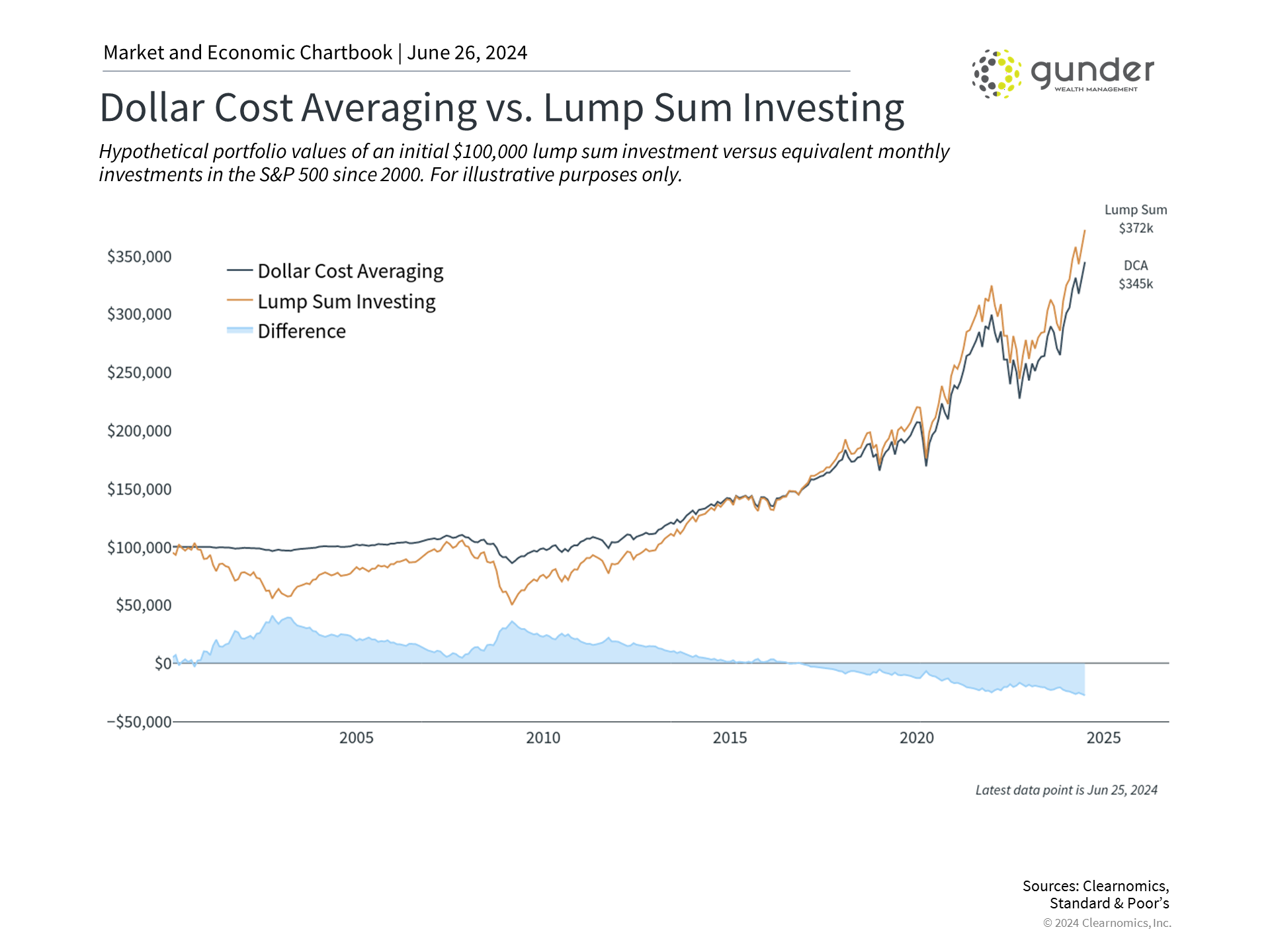
When it comes to investing, diversification and staying invested are the best ways to achieve long-term financial goals. However, this is often easier said than done, especially with the markets near all-time highs. Is there an optimal frequency to invest? Let’s get into the math of dollar cost averaging and lump-sum investing. The math, however, may not be the best solution for you!
Is dollar cost averaging worth it?
Markets are uncertain; whether it’s the upcoming presidential election, geopolitical conflict, or the direction of interest rates, investors may worry that the market could dip just after they invest.
But remember, just because the market is at a peak doesn’t necessarily mean it’s “due for a pullback.”
Ironically, it can be psychologically challenging to invest whether the market is rising or falling, for fear that it might be at its peak when rising or fall further when declining.
How to invest if you have a liquidity event
Knowing when and how to invest may be difficult if you suddenly come into a large sum of money through an annual bonus, the sale of a business, or an inheritance. In the long run, investing can turn savings into wealth. However, market volatility can derail even the most steadfast investors in the short run. This is where dollar-cost averaging (DCA) can help.
With a DCA approach, investors regularly invest a set amount on a pre-planned schedule, which reduces the temptation to react to market moves and try to time the market.
Which method performs best over time?
While DCA may not be the mathematically optimal way to invest, it may help investors stay focused on the long run without trying to time the market. And remember, getting invested sooner is better than waiting for the right timing.
If you already contribute to your employer-sponsored plan (i.e., 401(k), 403(b)) via your paycheck, this is DCA! The frequency isn’t as crucial as simply sticking to a plan and automating it.
In contrast, investing all at once is known as lump sum investing. How your portfolio performs in the short run is determined by how the market performs immediately after the investment.

The chart above illustrates the hypothetical returns between these two methods beginning in 2000.
- Investing $100,000 in the S&P 500 would have lost value almost immediately due to the dot-com crash. The investment would have recovered over the next several years until the housing crash in 2008. The investment would have recovered in 2013 when the S&P 500 returned to all-time highs and then benefited from the long bull market that followed.
- In contrast, you can see the hypothetical returns of a DCA approach where the investor splits the $100,000 total investment into monthly investments.
The takeaway is that staying invested and investing on a recurring basis maximizes your risk-adjusted return over the long term. However, lump-sum investing tends to outperform over time; you may have to be more prepared for portfolio swings with a lump-sum approach!
DCA may allow you to be a less emotional investor
How can you place a value on that?
Let us know if you want to set up or modify your current investment frequency. Feel free to book some time with us here.
Please consult with your financial advisor and/or tax professional to determine the suitability of these strategies. All views, expressions, and opinions in this communication are subject to change. This communication is not an offer or solicitation to buy, hold or sell any financial instrument or investment advisory services.
